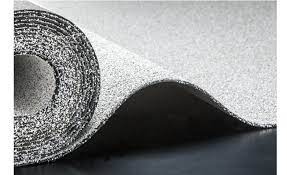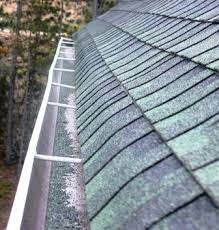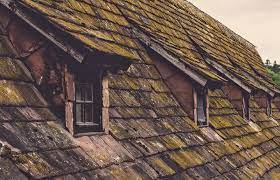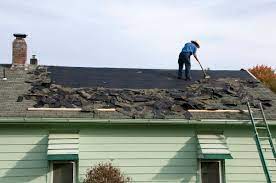Roof Mineral Granules
 Mineral granules may seem like just a decorative accent for your roof, but they actually serve as an additional protective layer for your shingles and your home, and significant granular loss can say a lot about the health of your roofing system.
Mineral granules may seem like just a decorative accent for your roof, but they actually serve as an additional protective layer for your shingles and your home, and significant granular loss can say a lot about the health of your roofing system.
It is important that homeowners know the function of shingle pellets and the common causes of shingle loss to help localized damage and know when to contact a professional roofer Bournemouth for an inspection.
Mineral granules have been added to the shingle design as they help protect your roof from excessive sun exposure, which can eventually lead to damage and speed up roof replacement. Pellets also add increased fire resistance to your roof, providing another layer of protection for your home.
As your roof ages, it is quite normal to lose grainy textures. Although age is the most common cause of granule loss, several other factors can contribute to the premature loss of this protective coating. Inclement weather like heavy rain, hail or strong winds can also cause your pellets to fall.
Shingle pellets in gutters
 Following a storm, you may find an increased amount of shingle pellets in your gutters or in your yard. Granular loss is something homeowners can learn about without having to climb onto their roofs. To identify pellet loss, simply walk around the perimeter of your home and examine the world around your downspouts.
Following a storm, you may find an increased amount of shingle pellets in your gutters or in your yard. Granular loss is something homeowners can learn about without having to climb onto their roofs. To identify pellet loss, simply walk around the perimeter of your home and examine the world around your downspouts.
When the pellets come loose, they often run through your gutter system with water and collect at the bottom. You can also detect granular loss just by looking at your roof.
If you notice any spots that appear bare or discolored, it’s time to call a roofer for an inspection. Pellets help keep your roof weatherproof, so without them it’s easier for sun and water to cause roof leaks and deterioration which results into full damage.
An Old Roof
 It is a practice that the average lifespan of a roof runs from 20 to 75 years. This totally depends whether your roof is for commercial or residential, as the materials used in the roofing system will vary in both types.
It is a practice that the average lifespan of a roof runs from 20 to 75 years. This totally depends whether your roof is for commercial or residential, as the materials used in the roofing system will vary in both types.
For our typical roof homes, the age of a roof can either extend or shorten depending on several factors like tiles, roof type, substandard installation or poor engineering, the rate of damage to material, climate or location, etc. Even if you used a 100 year old roof tile, it could still break due to many reasons.
Keep in mind that Just because some of the tiles are missing, chipped, or broken does not follow replacing the entire roof. Aging roofs can also lead to poor roof ventilation, resulting in condensation trapping between the layers of your roof and underlayment, resulting in mold and deterioration of your roof, as well as damage to the roof.
Should you replace an old roof?
 With every passing year it’s easy to find excuses not to replace an old roof so quickly. Roofs are expensive and can take a long time to replace. However, there’s an honest reason for the value and care taken in installing roofs – they serve lots of important purposes as part of your home.
With every passing year it’s easy to find excuses not to replace an old roof so quickly. Roofs are expensive and can take a long time to replace. However, there’s an honest reason for the value and care taken in installing roofs – they serve lots of important purposes as part of your home.
Let’s take a look at a number of ways that an old roof can seriously compromise your home’s security, your utility bills, and therefore the overall amenity of your home as a place to live. From the wind, storms, rain, hail and father’s time, the roofs take a hit.
A roof that is more than 20 years old deteriorates over time and cannot protect your home as well because it once did. Many insurance companies don’t cover an old roof for this very reason. Here’s why old roofs can become a problem for you.
